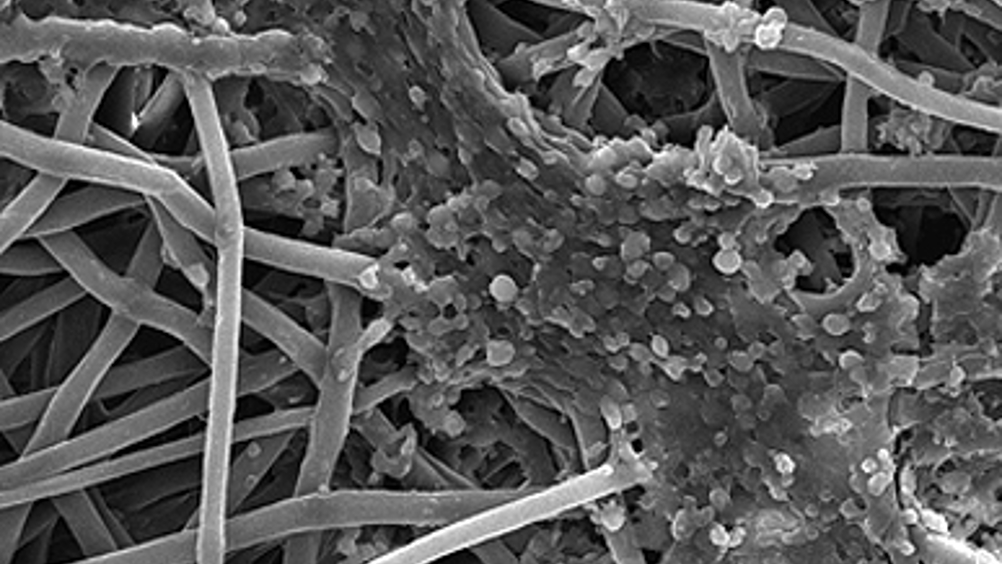Culturing tumours in 3D assists cancer drug development
Porous polymer scaffolds fabricated to support the growth of biological tissue for implantation could accelerate the development of cancer therapeutics, researchers claim.

Researchers in the US have reported that 3D scaffolds used to culture Ewing’s sarcoma cells were effective at mimicking the environment in which such tumours develop.
‘The scaffolds better recapitulate the microenvironment in which tumours grow, as compared with two-dimensional plastic surfaces typically used in cancer research to test anti-cancer drugs,’ said Rice University bioengineer Antonios Mikos, who led the research team with Joseph Ludwig, an assistant professor and sarcoma medical oncologist at the University of Texas MD Anderson Cancer Center.
‘We’ve been working to investigate how we can leverage our expertise in engineering normal tissues to cancerous tissues, which can potentially serve as a better predictor of anti-cancer drug response than standard drug-testing platforms,’ Mikos said in a statement.
By growing cancer cells within a three-dimensional scaffold rather than on flat surfaces, the team of researchers found that the cells bore closer morphological and biochemical resemblance to tumours in the body.
Additionally, engineering tumours that mimic those in vivo offers opportunities to more accurately evaluate such strategies as chemotherapy or radiation therapies, he said.
Register now to continue reading
Thanks for visiting The Engineer. You’ve now reached your monthly limit of news stories. Register for free to unlock unlimited access to all of our news coverage, as well as premium content including opinion, in-depth features and special reports.
Benefits of registering
-
In-depth insights and coverage of key emerging trends
-
Unrestricted access to special reports throughout the year
-
Daily technology news delivered straight to your inbox










CCC Report Finds UK Climate Targets Still Within Reach
In 1990 67% of the UK´s electricity came from coal-fired power stations and even without renewables the transition to gas was a major contributor to...